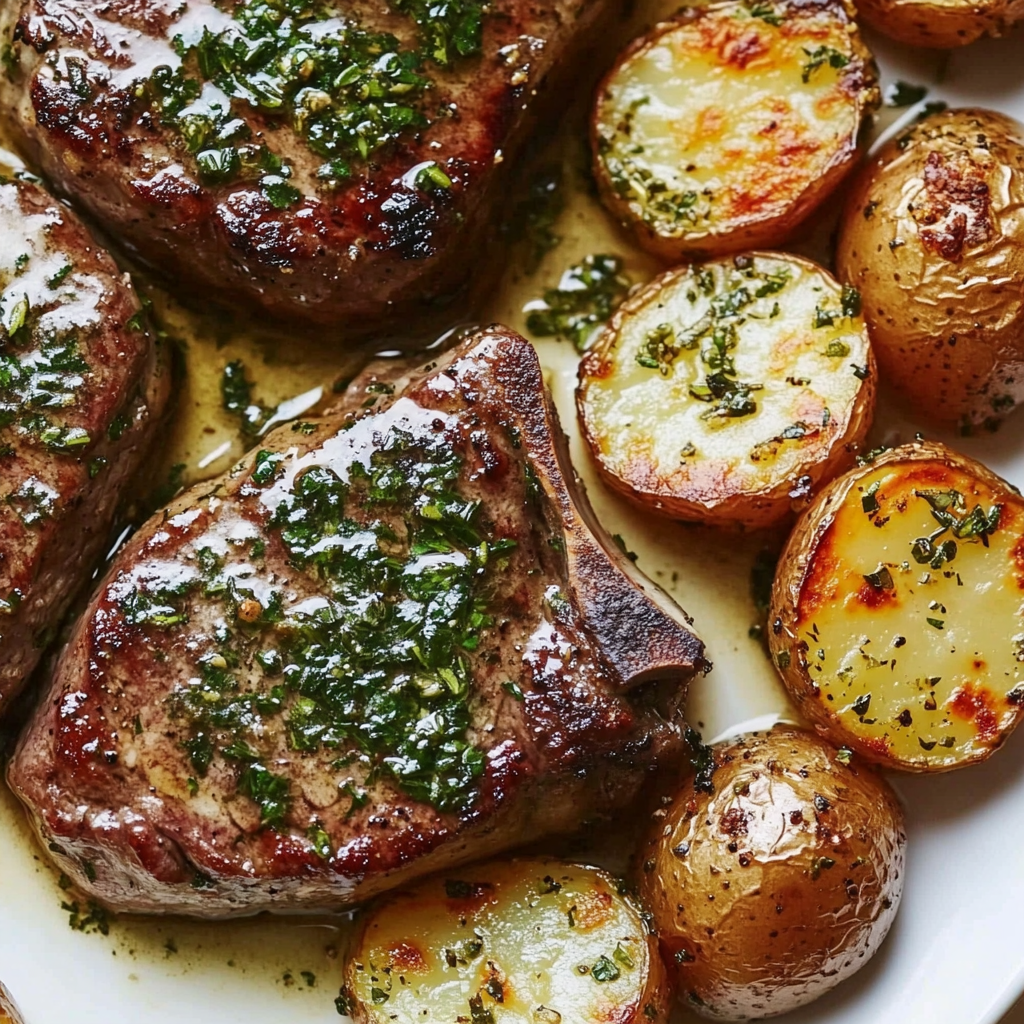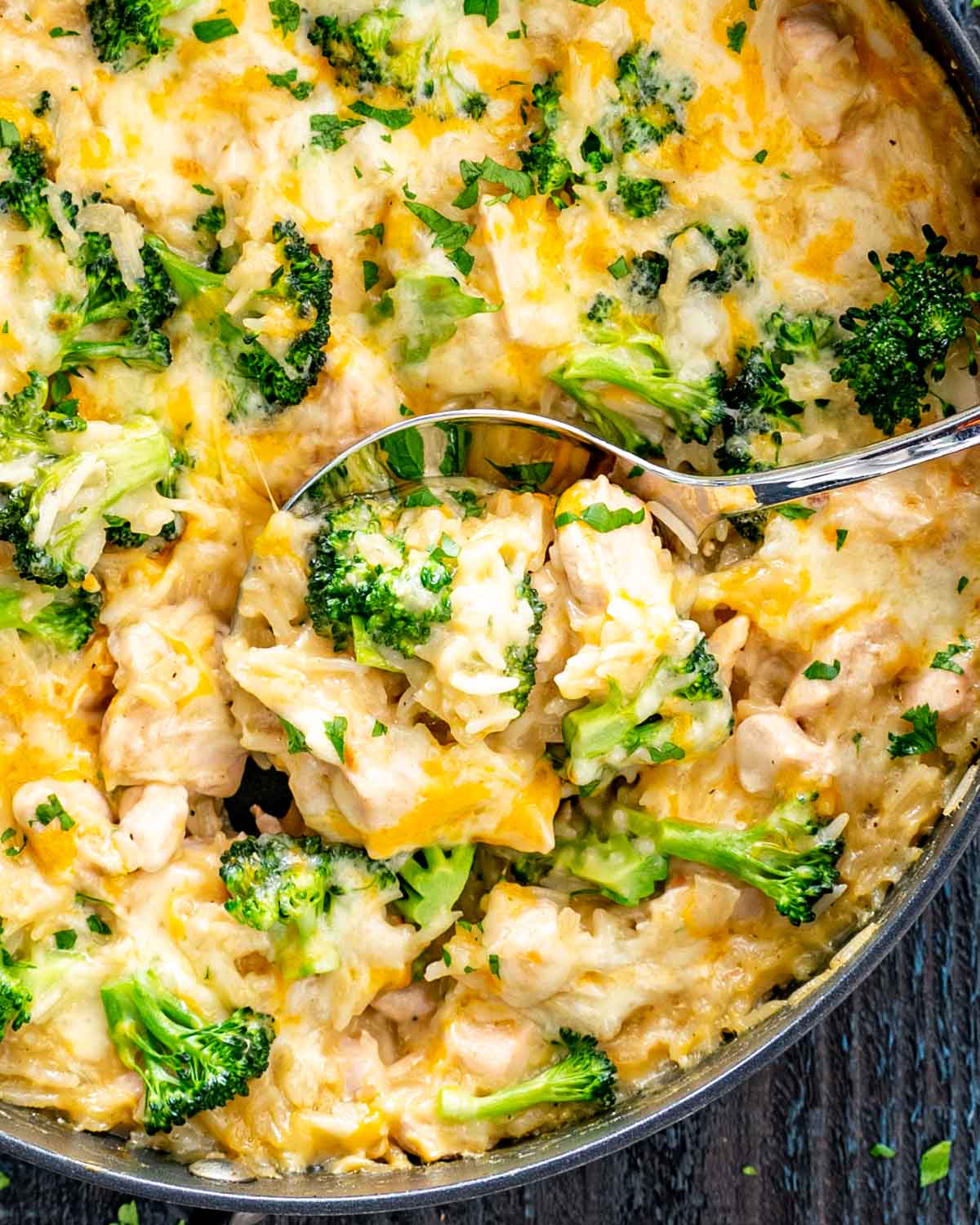Sharing is caring!
Garlic Herb Steak with Golden Potatoes
Introduction
Craving a restaurant-quality meal at home? This garlic herb steak recipe delivers juicy, flavor-packed perfection every time. Paired with golden potatoes, it’s a hearty dish that’ll impress family and guests alike. Whether you’re a seasoned cook or a beginner, our step-by-step guide ensures success.
Why does this garlic herb steak stand out? The secret lies in the marinade—fresh herbs, minced garlic, and a touch of olive oil create a savory crust. For a lighter twist, try our keto shrimp salad as a refreshing side.
From prep to plating, we’ll walk you through each step. Plus, discover pro tips for avoiding common mistakes and storing leftovers. Ready to elevate your steak game? Let’s dive in!
Table of Contents
Ingredients List
- 2 (8-10 oz) ribeye or sirloin steaks
- 4 medium golden potatoes, quartered
- 3 tbsp olive oil, divided
- 4 garlic cloves, minced
- 2 tbsp fresh rosemary, chopped
- 1 tbsp fresh thyme leaves
- 1 tsp sea salt
- ½ tsp black pepper
- 2 tbsp unsalted butter
- 1 lemon, juiced (optional for brightness)
Timing
- Prep Time: 15 minutes (includes marinating)
- Cook Time: 20 minutes (steak + potatoes)
- Total Time: 35 minutes
- Servings: 2
Step-by-Step Instructions
Follow these simple steps to create a mouthwatering garlic herb steak with golden potatoes:
1. Prep the Steak
Pat the steak dry with paper towels to ensure a perfect sear. Generously season both sides with salt and pepper.
2. Make the Garlic Herb Butter
In a small bowl, mix softened butter, minced garlic, chopped parsley, rosemary, and thyme. Set aside for later.
3. Sear the Steak
Heat a cast-iron skillet over medium-high heat. Add oil and sear the steak for 4-5 minutes per side for medium-rare.
4. Roast the Potatoes
Toss cubed potatoes with olive oil, salt, and herbs. Roast at 400°F (200°C) for 25-30 minutes until golden and crispy.
5. Finish with Herb Butter
Top the rested steak with a dollop of garlic herb butter. Serve immediately with roasted potatoes.
Nutritional Information
This garlic herb steak recipe packs flavor while providing balanced nutrition. Here’s the breakdown per serving:
- Calories: 520
- Protein: 38g
- Carbs: 22g
- Fats: 32g
- Fiber: 3g
For a leaner option, try substituting the butter with olive oil or avocado oil. If you’re exploring other protein-rich meals, check out our keto shrimp salad or its spicy variation.
Research from The Stay at Home Chef shows that grass-fed beef offers higher omega-3 content. For plant-based alternatives, Julie’s split pea soup delivers comparable protein with less saturated fat.
Healthier Alternatives for the Recipe
Love the bold flavors of garlic herb steak but want a lighter version? Try these simple swaps to keep the dish delicious while boosting its nutritional profile.
Leaner Cuts of Meat
Opt for leaner cuts like sirloin or flank steak instead of ribeye to reduce saturated fat. These cuts still absorb garlic and herb marinades beautifully. For a plant-based twist, try marinated portobello mushrooms—they offer a meaty texture and soak up flavors well.
Low-Sodium Marinades
Swap soy sauce for coconut aminos or a squeeze of lemon juice to cut sodium without sacrificing taste. Fresh herbs like rosemary and thyme add depth, while a dash of olive oil keeps the steak juicy. Check out our Keto Shrimp Salad for more low-sodium seasoning ideas.
Golden Potato Alternatives
Replace golden potatoes with roasted cauliflower or sweet potatoes for extra fiber and vitamins. A study by Cooked by Julie highlights how root vegetables can enhance nutrient absorption when paired with healthy fats like olive oil.
Oil-Free Cooking
Use an air fryer or grill with a light spritz of avocado oil spray instead of pan-frying. This method reduces calories while keeping the steak crispy. For more oil-free inspiration, our Apple Oat Muffins use applesauce as a natural binder.
Serving Suggestions
Elevate your garlic herb steak with sides and presentations that complement its rich flavors. Here’s how to turn it into a showstopper meal.
Pair with Fresh Salads
A crisp arugula salad with shaved Parmesan balances the steak’s richness. Add a tangy vinaigrette—whisk together lemon juice, Dijon mustard, and a touch of honey. For more salad pairings, explore our Keto Shrimp Salad variations.
Wine Pairings
A bold Cabernet Sauvignon or earthy Pinot Noir enhances the garlic-herb notes. If you prefer white wine, a buttery Chardonnay works well. The Dizzy Cook suggests similar pairings for hearty dishes.
Family-Style Plating
Arrange sliced steak and potatoes on a wooden board for a rustic vibe. Garnish with fresh thyme sprigs and roasted garlic cloves. For dessert, serve our Fruit Cobbler to round out the meal.
Leftover Makeovers
Transform leftovers into steak tacos or a hearty grain bowl with quinoa and veggies. The Stay-at-Home Chef offers creative ways to repurpose proteins.
Common Mistakes to Avoid
Making garlic herb steak seems simple, but small errors can affect flavor and texture. Here’s what to watch for:
Overcrowding the Pan
Don’t overcrowd your skillet—this steams the steak instead of searing it. For a perfect crust, cook in batches if needed. A crowded pan also lowers the temperature, making it harder to achieve that golden-brown finish.
Underseasoning
Garlic herb steak relies on bold flavors. Skipping salt or skimping on fresh herbs dulls the taste. Season generously, and consider adding a finishing salt like Maldon flakes for extra depth.
Overcooking
Use a meat thermometer to avoid dry, tough steak. Medium-rare (130–135°F) is ideal for tenderness. For more tips on perfect doneness, check our guide to protein cooking times.
Using Cold Steak
Always let steak sit at room temperature for 20–30 minutes before cooking. Cold meat cooks unevenly, leading to a charred exterior and raw center.
Storing Tips for the Recipe
Proper storage keeps your garlic herb steak juicy and flavorful. Follow these steps:
Refrigeration
Store leftovers in an airtight container for up to 3 days. For meal prep, pair with golden potatoes and reheat gently to avoid toughness. Need ideas for repurposing? Try shredding steak into a hearty salad.
Freezing
Freeze cooked steak in a single layer on a baking sheet before transferring to a freezer bag. It’ll last up to 3 months. Thaw overnight in the fridge, then reheat in a skillet with a splash of broth. For long-term herb storage, freeze herbs in oil to preserve freshness.
Reheating
Skip the microwave—it dries out meat. Instead, warm steak in a 250°F oven or low-heat skillet. Add a pat of butter or drizzle of olive oil to revive moisture.
Conclusion
This garlic herb steak recipe is a surefire way to impress at any dinner table. The blend of fresh herbs, garlic, and golden potatoes creates a flavor-packed meal that’s both hearty and satisfying. Whether you’re cooking for a special occasion or a weeknight dinner, this dish delivers restaurant-quality taste with minimal effort.
For more delicious recipes, check out our Keto Shrimp Salad or try our Fruit Cobbler for a sweet finish to your meal. Happy cooking!
FAQs
Can I use dried herbs instead of fresh ones?
Yes, but reduce the quantity by half since dried herbs are more concentrated in flavor.
What’s the best cut of steak for this recipe?
Ribeye or New York strip works best, but sirloin is a great budget-friendly option.
How do I prevent the steak from becoming tough?
Avoid overcooking—use a meat thermometer and pull the steak off the heat at 135°F (medium-rare) for optimal tenderness.
Can I substitute potatoes with another side?
Absolutely! Roasted carrots or a crisp Keto Shrimp Salad pair well with garlic herb steak.
How long can I store leftovers?
Store in an airtight container for up to 3 days in the fridge. Reheat gently to preserve texture.










